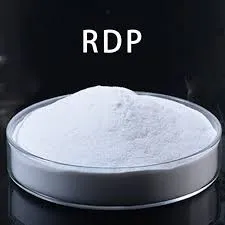
नवम्बर . 09, 2024 21:32 Back to list
Exploring the Role of HPMC as an Essential Pharmaceutical Excipient in Formulations
HPMC Excipients An Overview of Their Role in Pharmaceutical Formulations
Hydroxypropyl Methylcellulose (HPMC) is a cellulose ether that has gained significant prominence in the pharmaceutical industry as an excipient. As an excipient, HPMC serves as an inactive substance that aids the delivery, stability, and overall functionality of active pharmaceutical ingredients (APIs). This versatile polymer is praised for its unique chemical and physical properties, making it an invaluable component in various drug formulations.
Chemical Structure and Properties
HPMC is derived from natural cellulose through a series of chemical modifications, including hydroxypropyl and methoxy group substitutions. This structure endows HPMC with several key properties, including solubility in water, a gel-like consistency upon hydration, and thermoplastic behavior upon heating. Its ability to form viscous solutions makes it an excellent thickening agent and stabilizer, which is particularly useful in liquid formulations.
Applications in Pharmaceutical Formulations
1. Tablet Formulation HPMC is widely utilized in the production of tablets, both immediate-release and controlled-release formulations. In immediate-release tablets, HPMC acts as a binder, ensuring the uniformity and integrity of the tablet structure. In controlled-release tablets, it forms a gel-like matrix that regulates the release of the active ingredient, allowing for sustained therapeutic effects over an extended period.
2. Capsule Formulation HPMC is also employed in the production of vegetarian capsules. Unlike traditional gelatin capsules derived from animal sources, HPMC capsules cater to the growing demand for vegan and vegetarian options. These HPMC capsules not only improve patient compliance but also enhance the stability of moisture-sensitive APIs.
3. Suspensions and Emulsions In liquid formulations, HPMC functions as a suspending and emulsifying agent. Its ability to thicken solutions helps to prevent sedimentation of solid particles in suspensions and ensures the stability of emulsions, enhancing the overall shelf life of the products.
hpmc excipient

4. Ophthalmic Solutions The use of HPMC is particularly notable in ophthalmic formulations. Its high viscosity contributes to prolonged ocular retention time, thereby enhancing the therapeutic efficacy of eye drops and reducing the frequency of administration required by patients.
Advantages of Using HPMC
The incorporation of HPMC in pharmaceutical formulations offers various advantages. Firstly, it is generally recognized as safe (GRAS) and is approved by regulatory bodies such as the FDA and EMA, ensuring that it can be utilized in human health applications. Secondly, HPMC is chemically stable, which contributes to the overall stability of the final product. Its gel-forming capability not only aids in the controlled release of APIs but also improves the palatability of certain formulations. Furthermore, HPMC exhibits compatibility with a wide range of drugs, making it a flexible choice for formulators.
Challenges and Considerations
While HPMC offers numerous benefits, formulators must also be aware of potential challenges. The viscosity of HPMC can vary significantly based on its molecular weight, which can affect the processing and final properties of the formulation. Additionally, the hygroscopic nature of HPMC may require careful consideration in terms of moisture control during production and storage.
Conclusion
HPMC stands out as a multifunctional excipient in the pharmaceutical industry. Its unique properties facilitate the development of various dosage forms, enhancing both the efficacy and safety of medications. As the pharmaceutical landscape continues to evolve, the demand for high-quality excipients like HPMC remains crucial. With ongoing research and innovation, HPMC will likely continue to play a pivotal role in the advancement of drug delivery systems, ultimately benefiting patients and healthcare providers alike. The future of pharmaceutical excipients may hinge on the continued exploration and optimization of materials like HPMC, solidifying its place at the forefront of medication formulation.
-
Unlocking the Benefits of HPMC Products: A Gateway to Versatile Applications
NewsAug.07,2025
-
Unleashing the Potential of HPMC Ashland: A Comprehensive Look
NewsAug.07,2025
-
Tile Bonding Cellulose: The Key to Superior Adhesion and Durability
NewsAug.07,2025
-
Hydroxypropyl Methylcellulose Powder: The Versatile Component in Modern Pharmaceuticals
NewsAug.07,2025
-
Hydroxyethyl Cellulose: The Versatile Solution for Various Industries
NewsAug.07,2025
-
Hydroxyethyl Cellulose (HEC): The Versatile Polymer for Various Applications
NewsAug.07,2025







